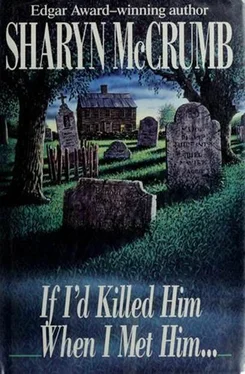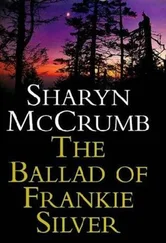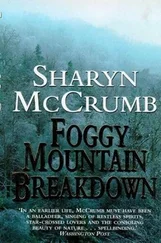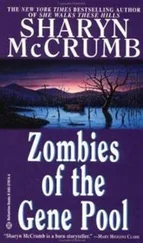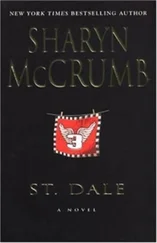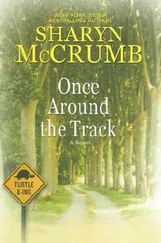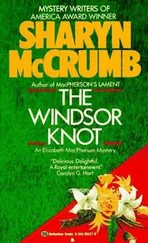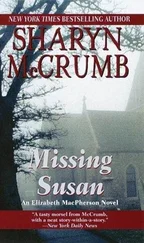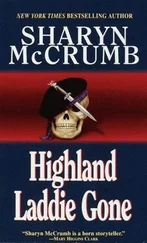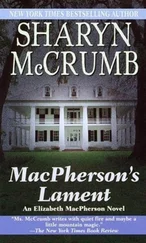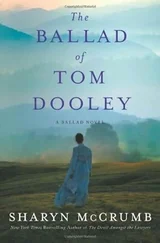“You are not required to by law,” said Bill. He blushed. “I mean, I could look it up, but-”
“No, I want to give her some,” his client replied. “I think she ought to go off to college. Maybe Chevry owed her that. Maybe she’ll get smart enough not to fall for some man’s line of talk if she gets educated.”
“Speaking of Tanya Faith,” said Edith. “There’s bound to be some unpleasant questions if you do hold a press conference. Are you sure you don’t want to skip the publicity?”
Donna Jean Morgan shook her head. “I welcome the chance to clear my name, and my great-grandmother’s, too.”
An awkward silence followed her remark. Bill and Elizabeth looked at each other. Finally Edith declared, “You might as well tell her. She’s got a right to know, being a descendant and all.”
“A right to know what?”
“The whole truth and nothing but the truth,” Edith sang out.
“Hush, Edith!” said Elizabeth. “Bill, I think I’d better tell her, since I’m the one who figured it out. Mrs. Morgan, you don’t want to mention your great-grandmother at the press conference. What they’re trying to tell you is that your great-grandmother, Lucy Todhunter, was guilty of murder. Technically, that is.”
“Technically? What do you mean?” Donna Jean Morgan wished these legal types would learn plain speaking. “Either she killed somebody or she didn’t.”
“Yes,” said Elizabeth, who was wavering between sympathy for the murderess’s descendant and excitement over her discovery. “She did kill her husband, Philip Todhunter, but perhaps it’s just as well that she was acquitted, because the court would have had an awfully difficult time proving that Lucy had murdered her husband with a beignet. That’s a pastry covered with powdered sugar.”
“Oh, that old doughnut,” said Donna Jean. “I thought they tested a bit of the one she gave Great-Granddaddy Philip, and that they hadn’t found any trace of poison on it.”
“That’s true, Mrs. Morgan,” said Elizabeth. “The beignet contained no arsenic, which is why Philip Todhunter died. He had trusted Lucy to bring him his arsenic, and instead she brought him powdered sugar, and so he died.”
“But there was arsenic in his system.”
“Of course there was. Philip Todhunter was an arsenic eater.” Elizabeth had looked forward to this explanatory lecture during her own painful recovery from accidental poisoning, and now she was savoring the delicious triumph of having solved a mystery that had confounded researchers for more than a century. She had mentally rehearsed this summation of the case, and she intended to give it in fall.
“He took arsenic himself, habitually, just as a drug addict might take heroin or cocaine.”
“Why would anyone take arsenic?” asked Bill.
“It was considered a stimulant,” Elizabeth told him. “It was supposed to give one energy, and- probably more important to someone with a young bride-it was supposed to increase a man’s sexual prowess.”
“Oh,” said Bill. The four other occupants of the table, all female, were watching him with interest, so he directed his attention to the salad with rather more intensity than perhaps it deserved.
“It was not an uncommon addiction among nineteenth-century gentlemen,” said Elizabeth.
“It figures,” said Edith.
“The problem with taking arsenic is that it is addictive, and it does enable the body to withstand larger and larger doses, so that an addict can ingest an amount of poison that would kill an ordinary person, but according to the article in Chambers , there is one fatal flaw in the habit of arsenic eating: you can never quit .”
“Why not?” asked A. P. Hill. “Can’t you just taper off, until your body is no longer physically dependent?”
“Apparently, withdrawal is so horribly painful, that few if any addicts ever succeeded in quitting. The article was adamant about one thing, though: you can’t quit cold turkey, because if you do, the last dose you took acts as a poison on your system, just as it would affect the system of anyone who ingested a large dose of arsenic.”
“The last dose kills you,” mused Bill.
“Exactly. So the arsenic eater has to take his dose of arsenic every day in order to stay alive. He also has to take it in solid form, by the way.”
“I thought poisoners usually slipped arsenic into someone’s drink,” said A. P. Hill.
“Yes, but that’s how you administer arsenic when you want someone to die.” Elizabeth shivered. “That’s why I got so sick from drinking the tainted water at the old house. Apparently, arsenic in a liquid solution goes to the kidneys and other vital organs, and can cause a rapid, painful death.” She touched her abdomen gingerly. “I can testify to the painful part.”
“Arsenic eaters take their daily dose in solid form, then?” Bill held up a sugar packet between his thumb and forefinger, looked down at his iced tea, and tossed the packet down unopened.
“Yes. And they take care not to drink anything for a couple of hours after ingestion so that the arsenic isn’t carried to the kidneys in solution. Arsenic addicts take their drug in white powdered form.” She picked up Bill’s discarded sugar packet and smiled. “It looks a lot like sugar.”
“The beignet!” A. P. Hill had been listening to the evidence, and now she could see where the chain of reasoning led.
“Exactly! According to the testimony from Lucy Todhunter’s trial, Philip Todhunter was in the habit of eating a beignet for breakfast every morning. His wife, Lucy, always brought it to him, and the pastry was always covered with powdered sugar.”
“She brought him arsenic?” said Bill, whose appetite for dessert was rapidly disappearing.
“Yes-he insisted on it. He was an arsenic addict, so the arsenic beignet would not kill him. On the contrary, it kept him alive. They both knew that he had to have his daily dose of arsenic to survive.”
A. P. Hill looked thoughtful. “In that case it isn’t attempted murder to give someone arsenic.”
“Oh, no,” Elizabeth agreed. “It was medicinal. The attempted murder occurred-and succeeded-on the day that Lucy Todhunter brought her husband a beignet covered with powdered sugar.”
“Which he thought was arsenic.”
“Of course he did! Perhaps he had been trying to stop his addiction. I don’t know. The guests testified that he had been ill for nearly two days, and that he had eaten nothing. Obviously, he had given up trying to do without his required dose of arsenic when he accepted the beignet. Lucy, whom he had trusted for all those months to bring him his daily measure of poison, gave him the sugared pastry, and he ate it, thinking that his pains would soon cease once the drug stabilized his system, but instead the pains got worse, and he said to her, ‘Why did you do it?’ Meaning, I think, why did you bring me sugar instead of arsenic.”
“Why did she do it?” asked Edith. “I know you lawyers don’t set any store by motives, but the rest of us like to think that the world makes sense.”
“Let’s leave that point for a moment,” said A. P. Hill. “I’m interested in proof. Elizabeth, how did you know that Philip Todhunter was an arsenic eater to begin with? Have you any proof?”
“Yes. I first suspected that he might be an arsenic eater when I heard descriptions of him as a hypochondriac. His doctors described him as pale, with a clear waxy complexion. That description tallies with the addiction. Also, I knew that he had been in pain from injuries he’d suffered during the war, and I thought that some physician might have prescribed a tonic with arsenic as part of his treatment then. Arsenic was often used in patent medicines in those days. He could have built up a slight tolerance from taking an arsenic-laced tonic, and then later he might have drifted into a full-fledged addiction, eating pure arsenic.”
Читать дальше
